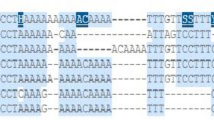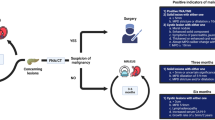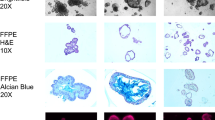Abstract
Carboxypeptidase E (CPE) is one of the most important carboxypeptidases involved in biosynthesis of numerous peptide hormones and neurotransmitters and has an important role in endocrine regulation. A splice variant of CPE (CPE-ΔN) has been detected and the mechanism of CPE-ΔN action in tumorigenesis has been studied in many different cancers. The aim of this study was to examine CPE-ΔN expression in human colorectal cancer (CRC) and to evaluate its possible use as a potential prognostic marker. Two hundred nineteen primary colorectal tumors and corresponding normal tissues were included in the study. We have analyzed CPE-ΔN isoform expression by qRT-PCR and Western blot in 219 CRC patients. Correlations between CPE-ΔN mRNA expression and clinicopathological variables were determined with chi-square tests. Survival probabilities were determined using Kaplan–Meier analysis, and univariate and multivariate analyses of the prognostic factors were performed with a Cox regression model. Our results show that CPE-ΔN is overexpressed in colorectal tumor tissue and that high CPE-ΔN mRNA expression is closely correlated with tumor differentiation, pT classification, pN classification, tumor recurrence, and lymph node metastasis (P = 0.042, 0.036, 0.031, 0.006, and 0.008, respectively). However, no correlation was observed between CPE-ΔN expression and age, gender, tumor localization, gross features, and the tumor size. In addition, patients with high CPE-ΔN expression had a significantly shorter survival (P < 0.001, logrank test). Tumor differentiation, gross feature, pT classification, pN classification, tumor recurrence, lymph node metastasis, and CPE-ΔN status were significantly associated with poor prognosis after performing a univariate Cox survival analysis. High CPE-ΔN expression was also identified as an independent prognostic factor using a multivariate analysis (P = 0.011). Based on these results, we can conclude that CPE-ΔN expression might be a potential prognostic marker for colorectal cancer patients.





Similar content being viewed by others
References
Fricker LD, Snyder SH. Enkephalin convertase: purification and characterization of a specific enkephalin-synthesizing carboxypeptidase localized to adrenal chromaffin granules. Proc Natl Acad Sci USA. 1982;79:3886–90.
Chen H, Jawahar S, Qian Y, et al. Missense polymorphism in the human carboxypeptidase E gene alters enzymatic activity. Hum Mutat. 2001;18(2):120–31.
Fricker LD, Carboxypeptidase E. Annu Rev Physiol. 1988;50:309–21.
Fricker LD. Activation and membrane binding of Carboxypeptidase E[J]. J Cell Biochem. 1988;38(4):279–89.
Fricker LD, Snyder SH. Purification and characterization of enkephalin convertase, an enkephalin-synthesizing carboxypeptidase. J Biol Chem. 1983;258:10950–5.
Hook VY, Loh YP. Carboxypeptidase B-like converting enzyme activity in secretory granules of rat pituitary. Proc Natl Acad Sci USA. 1984;81(9):2776–80.
Cool DR, Normant E, Shen F, Chen HC, Pannell L, Zhang Y, et al. Carboxypeptidase E is a regulated secretory pathway sorting receptor: genetic obliteration leads to endocrine disorders in Cpe(fat) mice. Cell. 1997;88:73–83.
Dhanvantari S, Shen FS, Adams T, Snell CR, Zhang C, Mackin RB, et al. Disruption of a receptor-mediated mechanism for intracellular sorting of proinsulin in familial hyperproinsulinemia. Mol Endocrinol. 2003;17:1856–67.
Song L, Fricker LD. Purification and characterization of carboxypeptidase D, a novel carboxypeptidase E-like enzyme, from bovine pituitary. J Biol Chem. 1995;270(42):25007–13.
Ge X, Yamamoto S, Tsutsumi S, Midorikawa Y, Ihara S, Wang SM. Aburatani H Interpreting expression profiles of cancers by genome-wide survey of breadth of expression in normal tissues. Genomics. 2005;86:127–41.
Murthy SR, Pacak K, Loh YP. Carboxypeptidase E: elevated expression correlated with tumor growth and metastasis in pheochromocytomas and other cancers. Cell Mol Neurobiol. 2010;30(8):1377–81.
Lee TK, Murthy SR, Cawley NX, et al. An N-terminal truncated carboxypeptidase E splice isoform induces tumor growth and is a biomarker for predicting future metastasis in human cancers. J Clin Invest. 2011;121(3):880–92.
Cawley NX, Wetsel WC, Murthy SR, Park JJ, Pacak K, Loh YP. New roles of carboxypeptidase E in endocrine and neural function and cancer. Endocr Rev. 2012;33:216–53.
Skalka N, Caspi M, Caspi E, Loh YP, Rosin-Arbesfeld R. Carboxypeptidase E: a negative regulator of the canonical Wnt signaling pathway. Oncogene. 2012; Jul 23. doi: 10.1038/onc.2012.308.
Livak KJ, Schmittgen TD. Analysis of relative gene expression data using real-time quantitative PCR and the 2−∆∆CT method. Methods. 2001;25(4):402–8.
He P et al. Identification of carboxypeptidase E and gammaglutamyl hydrolase as biomarkers for pulmonary neuroendocrine tumors by cDNA microarray. Hum Pathol. 2004;35(10):1196–209.
Guest PC, Ravazzola M, Davidson HW, Orci L, Hutton JC. Molecular heterogeneity and cellular localization of carboxypeptidase H in the islets of Langerhans. Endocrinology. 1991;129(2):734–40.
Du J, Keegan BP, North WG. Key peptide processing enzymes are expressed by breast cancer cells. Cancer Lett. 2001;165:211–8.
Rozengurt E. Neuropeptides as growth factors for normal and cancerous cells. Trends Endocrinol Metab. 2002;13(3):128–34.
Jeffrey KD, Alejandro EU, Luciani DS, Kalynyak TB, Hu X, Li H, et al. Carboxypeptidase E mediates palmitate-induced beta-cell ER stress and apoptosis. Proc Natl Acad Sci USA. 2008;105:8452–7.
Krajnik M, Schafer M, Sobanski P, et al. Enkephalin, its precursor, processing enzymes, and receptor as part of a local opioid network throughout the respiratory system of lung cancer patients. Hum Pathol. 2010;41:632–42.
Horing E, Harter PN, Seznec J, Schittenhelm J, Buhring HJ, Bhattacharyya S, et al. The ‘go or grow’ potential of gliomas is linked to the neuropeptide processing enzyme carboxypeptidase E and mediated by metabolic stress. Acta Neuropathol. 2012;124:83–97.
Acknowledgments
We thank Medjaden Bioscience Limited for assisting in the preparation of this manuscript.
Conflict of interest
None.
Author information
Authors and Affiliations
Corresponding authors
Additional information
Kun Zhou & Hongyan Liang contributed equally to this work.
Rights and permissions
About this article
Cite this article
Zhou, K., Liang, H., Liu, Y. et al. Overexpression of CPE-ΔN predicts poor prognosis in colorectal cancer patients. Tumor Biol. 34, 3691–3699 (2013). https://doi.org/10.1007/s13277-013-0952-3
Received:
Accepted:
Published:
Issue Date:
DOI: https://doi.org/10.1007/s13277-013-0952-3




